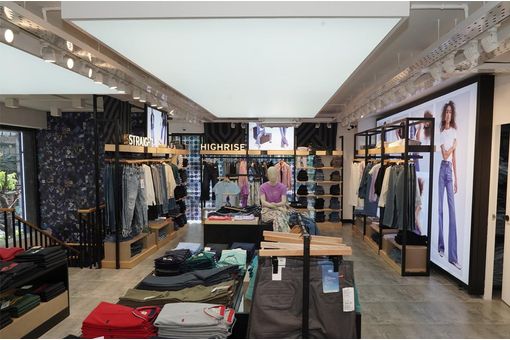Interviews
Garment exporters eye Indian market
20 Oct '10
3 min read
Half a decade ago, lapse of Multi Fibre Agreement was feared to bring bad tidings for Nepal especially because of its giant neighbor India over-shadowing it and winning bigger slice of textile trade post MFA.
Nepal, that owns mastery over stitching the ready to wear garments at low cost labor, has turned to its advantage its contender India into a benefactor. Garment exporters in Nepal, are witnessing upward trend in their exports to India. Obvious it is to be, they are now focusing on Indian market that is anticipated to be a potential one for Nepalese textiles, over the next five years.
With a view to examine the scenario closely, we interviewed the Chief Executive of Garments Association of Nepal (GAN), Mr Ashok Koirala. He enumerated various strengths of Nepal Garment industry saying –“Direct costs are comparatively lesser than the neighboring countries presently which include labor costs, electricity costs, etc. We have skilled labor and hence one doesn't need to start with the basics. We have the basic infrastructure. The Nepalese readymade garments especially typical to Nepalese culture are exported to the major countries of the world. Nobody understands Buddhist culture better than the Nepalese. Exports to Canada, Europe & Australia have duty free access to those countries under GSP facility extended to Nepal. Being an under developed country, Nepal has also applied for GSP facility to the US”.
Attributing the determinants behind increased focus on India, Mr Koirala told that for Indian market, Nepalese RMG exporters have the facility to import fabric from a third country, and to manufacture as well as export the garments made there from without paying any duty at entry or exit. India charges a CVD on such imported RMG equivalent to the excise duty payable on the same in India. This makes cost of importing RMG from Nepal equivalent to cost of manufacturing in India where other parameters remain same, he finds.
The chief further brought out about the barriers in the growth of industry in Nepal. He sees the political unrest resulting into labor unrest and thus hampering production. Load-shedding is another major problem according to him. However, the problem which he believes should be addressed with priority is the lack of Nepalese entrepreneur to directly market their products to potential buyers. Once, these problems are addressed Nepalese RMG sector could reach greater heights, Mr Koirala believes.
He also expressed his views on the current export priority list by Nepal Trade Integration Strategy (NTIS) 2010. He made note that the priority list consists of 19 items which are well deserved but not sufficient. In his opinion this list does not include the major three items which had formed the major portion of exports of the country in the past i.e. RMG, Carpet & Pashmina. He ending his quotes in satisfaction, however, acknowledged that after the efforts from various organizations the Nepalese government has agreed to include the same which would suffice the purpose.
Nepal, that owns mastery over stitching the ready to wear garments at low cost labor, has turned to its advantage its contender India into a benefactor. Garment exporters in Nepal, are witnessing upward trend in their exports to India. Obvious it is to be, they are now focusing on Indian market that is anticipated to be a potential one for Nepalese textiles, over the next five years.
With a view to examine the scenario closely, we interviewed the Chief Executive of Garments Association of Nepal (GAN), Mr Ashok Koirala. He enumerated various strengths of Nepal Garment industry saying –“Direct costs are comparatively lesser than the neighboring countries presently which include labor costs, electricity costs, etc. We have skilled labor and hence one doesn't need to start with the basics. We have the basic infrastructure. The Nepalese readymade garments especially typical to Nepalese culture are exported to the major countries of the world. Nobody understands Buddhist culture better than the Nepalese. Exports to Canada, Europe & Australia have duty free access to those countries under GSP facility extended to Nepal. Being an under developed country, Nepal has also applied for GSP facility to the US”.
Attributing the determinants behind increased focus on India, Mr Koirala told that for Indian market, Nepalese RMG exporters have the facility to import fabric from a third country, and to manufacture as well as export the garments made there from without paying any duty at entry or exit. India charges a CVD on such imported RMG equivalent to the excise duty payable on the same in India. This makes cost of importing RMG from Nepal equivalent to cost of manufacturing in India where other parameters remain same, he finds.
The chief further brought out about the barriers in the growth of industry in Nepal. He sees the political unrest resulting into labor unrest and thus hampering production. Load-shedding is another major problem according to him. However, the problem which he believes should be addressed with priority is the lack of Nepalese entrepreneur to directly market their products to potential buyers. Once, these problems are addressed Nepalese RMG sector could reach greater heights, Mr Koirala believes.
He also expressed his views on the current export priority list by Nepal Trade Integration Strategy (NTIS) 2010. He made note that the priority list consists of 19 items which are well deserved but not sufficient. In his opinion this list does not include the major three items which had formed the major portion of exports of the country in the past i.e. RMG, Carpet & Pashmina. He ending his quotes in satisfaction, however, acknowledged that after the efforts from various organizations the Nepalese government has agreed to include the same which would suffice the purpose.
Fibre2fashion News Desk - India
Popular News
Leave your Comments
Folker Stachetzki
Brother Internationale Industriemaschinen GmbH
Aleksandre Akhalkatsishvili
Label - Aleksandre Akhalkatsishvili
































-Ltd..jpg?tr=w-120,h-60,c-at_max,cm-pad_resize,bg-ffffff)





.jpg?tr=w-120,h-60,c-at_max,cm-pad_resize,bg-ffffff)
.jpg?tr=w-120,h-60,c-at_max,cm-pad_resize,bg-ffffff)






